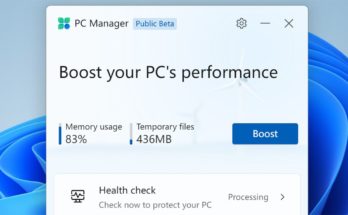
A calculadora embutida do Windows já percorreu um longo caminho desde que foi introduzida no Windows 1.0 em 1985. Inclui diferentes modos, cálculos de data e algumas funções úteis de conversão do dia a dia. Veja como você pode obter o máximo do aplicativo de calculadora, muitas vezes esquecido.
Índice
Alternando entre os modos da calculadora
Como você verá abaixo, a Calculadora faz muito mais do que adicionar, subtrair, multiplicar e dividir. Você pode escolher entre quatro modos, dependendo de suas necessidades.
Para alternar entre os modos, clique no botão de menu no canto superior esquerdo e selecione um modo das opções abaixo.

Aqui está o que esses modos diferentes fazem.
Modo padrão
O modo Padrão é útil para operações matemáticas básicas como somar, subtrair, multiplicar e dividir, bem como para encontrar raízes quadradas, calcular porcentagens e trabalhar com frações. Este é provavelmente o modo com o qual a maioria das pessoas se sentirá confortável na maior parte do tempo.

Modo Científico
O modo científico expande o modo padrão, fornecendo as funções adicionais que você encontraria em uma calculadora científica típica. Além dos operadores do modo Padrão, ele contém funções como log, módulo, expoente, graus trigonométricos e SIN, COS e TAN.

Modo Programador
Este modo é projetado para programadores. Ele adiciona a capacidade de alternar entre sistemas numéricos diferentes – binário, decimal, hexadecimal e octal. Ele também adiciona novas operações para trabalhar com portas lógicas – Or, And, Xor e Not – e deslocamento de bits – Lsh, Rsh, RoR e RoL.

Além disso, o modo Programador permite alternar entre Byte (8 bits), Word (16 bits), DWord (32 bits) e QWord (64 bits) e tem uma opção para alternar bits binários.

Modo de cálculo de data
O modo de cálculo de data é uma pequena ferramenta útil que permite calcular a diferença entre duas datas específicas. Isso é perfeito para descobrir coisas como quantos dias você tem ou quantos dias faltam para suas próximas férias.
Tudo o que você precisa fazer é selecionar a data de início e de término, e a calculadora determinará os meses, semanas e dias entre as duas.

Conversão de medidas
Já se deparou com uma receita que pede mililitros quando você quer onças fluidas ou faz compras online e todos os preços estão em euros? Bem, a calculadora cobre essas e algumas outras conversões diárias que você pode encontrar. Algumas outras conversões incluem temperatura, velocidade (mph para km / h, nós ou Mach), peso e massa e armazenamento de dados, para citar apenas alguns.
Clique no botão de menu e selecione um tipo de conversão na lista da seção “Conversor”.

Clique na primeira medição – esta será a entrada – e selecione uma unidade da lista fornecida.

Clique na segunda medição – esta será a saída – e selecione uma unidade lá também.

Agora, insira sua medida e a calculadora irá convertê-la para você. Ele também mostra algumas outras conversões relacionadas na parte inferior.

Armazenamento de números na memória
If you use certain numbers a lot and don’t want to plug them into your calculator every single time, storing them into the calculator’s memory helps a lot. It’s a super useful function that’s available on the Standard, Scientific, and Programmer modes. You’ll control the memory functions using the MS, MR, M+, M-, and MC buttons.

Here’s how they work:
- MS: Save a new number into the memory.
- MR: Recall the number from memory.
- M+: Adds together the number in the input box to the most recently stored number. Can also be used from the memory pane if you want to add to a different number in memory.
- M-: Subtracts the number in the input from the most recently stored number. Can also be used from the memory pane if you want to subtract from a different number in memory.
- MC: Clears all numbers from your memory storage.
- M: Displays all current numbers stored in memory.
Using the MR, M+, and M- buttons work much the same way they do on a physical calculator, working with the last number you stored to memory. However, you also have access to any other numbers you’ve stored to memory during your current session. To see them, click the M button with the down arrow to the far right. You can then click any number in your memory to insert it.

If you’d rather have your memory queue always open, resize your window horizontally and it should pop open when it has enough space to show it all.

Calculator History
If you need to take a look at all the calculations you’ve made in your current session, they’re stored conveniently inside the calculator’s history. Calculator keeps the history stored even when you switch modes, but it is erased when you close the Calculator app.
Accessing the History
There are two ways you can access the history inside the app. The first is to click the history button located in the top right corner. This shows you the list of recent calculations. Clicking on anything in the history will load it back into the calculator’s input box.

If you want to keep the history open, resize the Calculator window horizontally and it should pop up when the window is big enough.

Deleting the History
You can delete individual entries from your history or delete the entire history at once.
To delete an individual entry, right-click it and then click the “Delete” command. To delete the entire history, click the little trashcan icon at the bottom right of the pane.

Keyboard Shortcuts
The Calculator app has keyboard shortcuts integrated into it to make things a bit easier for those of us that like to use hotkeys to get around the desktop. To start with, if you have a number pad on your keyboard, make sure NumLock is turned on and then you can use the pad to perform calculations.
Also, there are some other shortcuts you can use. You can find a full list of these shortcuts on the Microsoft Support Windows Keyboard Shortcuts page, but here are a few of the more generally useful ones:
- Alt+(1-4): Hold down Alt and press any number from one to four to switch to the different calculator modes.
- Delete: Clear the current input (this works like the CE key on the calculator)
- Esc: Clear all input (this works like the C key on the calculator)
- Ctrl+H: Turn history on and off.
And that’s about it—probably more than you ever wanted to know about the Windows Calculator. Still, it’s an underappreciated tool that packs in a lot of useful features.


